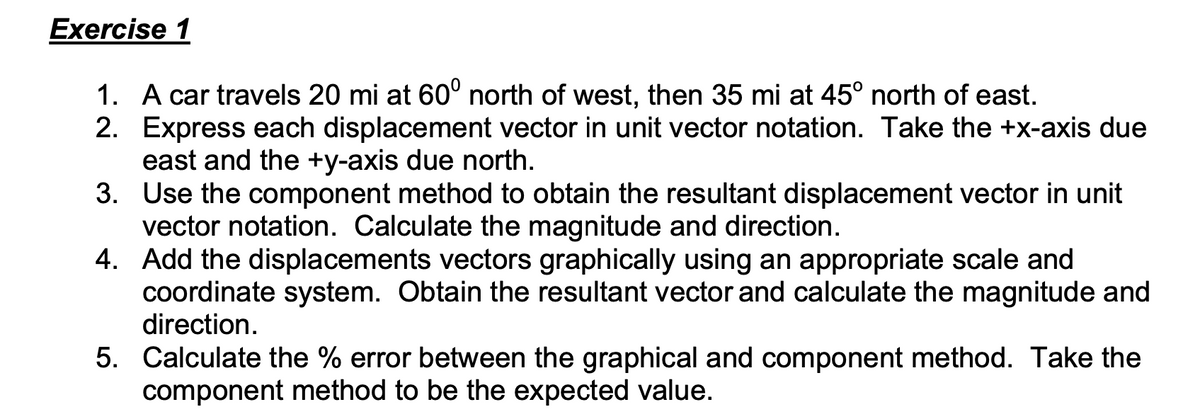1. A car travels 20 mi at 60° north of west, then 35 mi at 45° north of east. 2. Express each displacement vector in unit vector notation. Take the +x-axis due east and the +y-axis due north. 3. Use the component method to obtain the resultant displacement vector in unit vector notation. Calculate the magnitude and direction.
1. A car travels 20 mi at 60° north of west, then 35 mi at 45° north of east. 2. Express each displacement vector in unit vector notation. Take the +x-axis due east and the +y-axis due north. 3. Use the component method to obtain the resultant displacement vector in unit vector notation. Calculate the magnitude and direction.
Related questions
Question
Please answer all parts and show work

Transcribed Image Text:Exercise 1
1. A car travels 20 mi at 60° north of west, then 35 mi at 45° north of east.
2. Express each displacement vector in unit vector notation. Take the +x-axis due
east and the +y-axis due north.
3. Use the component method to obtain the resultant displacement vector in unit
vector notation. Calculate the magnitude and direction.
4. Add the displacements vectors graphically using an appropriate scale and
coordinate system. Obtain the resultant vector and calculate the magnitude and
direction.
5. Calculate the % error between the graphical and component method. Take the
component method to be the expected value.
Expert Solution
This question has been solved!
Explore an expertly crafted, step-by-step solution for a thorough understanding of key concepts.
This is a popular solution!
Trending now
This is a popular solution!
Step by step
Solved in 4 steps with 6 images
